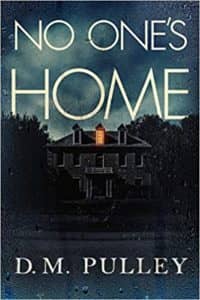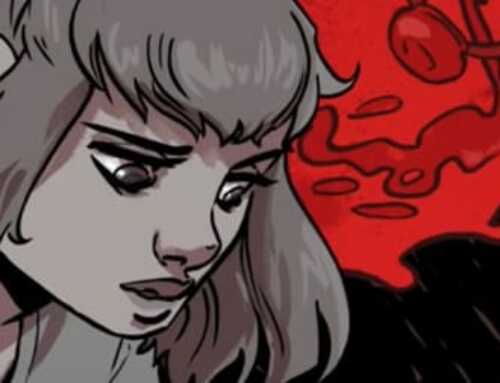Margot and Myron Spielman move to a new town, looking for a fresh start and an escape from the long shadow of their past. But soon after they buy Rawlingswood, a foreclosed mansion rumored to be haunted, they realize they’re in for more of the same…or worse. After a renovation fraught with injuries and setbacks, the Spielmans move into the century-old house, and their problems quickly escalate. The home’s beautiful facade begins to crumble around them when their teenage son uncovers disturbing details of Rawlingswood’s history—a history of murder, betrayal, and financial ruin. The Spielmans’ own shameful secrets and lies become harder to hide as someone or something inside the house watches their every move.
No One’s Home is the fourth novel by relative newcomer D.M. Pulley, an engineer turned author who first made waves in the mystery and thriller genres with her 2014 debut The Dead Key. The novel is clear and direct in its intentions, as everything from the cover to the floorplan illustrations which preface the book and even the author’s note reflect Pulley’s self-admitted emulation of Shirley Jackson and The Haunting of Hill House.
On this front, the novel delivers in spades, as the setting and atmosphere demonstrate a deep understanding of gothic style and an approach to the haunted house narrative which will doubtlessly enthrall fans of both Jackson’s novel and the 2018 Netflix adaptation of that subject matter. I make this distinction primarily because, much like 2018’s Hill House, No One’s Home takes special care to modernize its setting and focus. The novel pushes very similarly into themes dealing with the estrangement of family and secrets which weigh just as heavily on the characters as the supernatural, but it addresses those issues through modern plot devices like prescription opioid abuse. It’s not a stretch to imagine this novel optioned for a future season of the show, as the overall aesthetic here fits almost perfectly– compare the cover above to the thumbnail you’ve probably seen for Hill House and you’ll know exactly what I mean.
This isn’t to say that No One’s Home isn’t without its own merits– in fact, I found Pulley’s approach to storytelling quite refreshing. Often, novels which involve hauntings take far too long to develop and hit a midway doldrum wherein nothing especially engaging happens. This is because haunted house stories generally follow the same plot beats: someone moves into a new home, usually with an extensive history, and then is slowly exposed to more and more of the supernatural until they piece together the history of the haunting or are otherwise forced to confront the evil in their home. There are only so many ways to write that rising action of a haunting, many of which are so overwritten as to be parodies of themselves– how many doors can mysteriously shut, how many lights can flicker, and how many floorboards can creak before our protagonist will acknowledge that yes, something is wrong. Subverting this boredom is where Pulley shines, as splitting the novel into the four eras of the house (each with their own characters and plot) means that there is always something interesting to focus on or which the reader would like to return to. We aren’t forced to watch a teenager play video games for longer than actually serves the plot, as there’s plenty to explore elsewhere without being tied to the mundane actions of any one character. It’s nice to read a haunting in which there’s a lot happening, even if it isn’t all happening at the same time and often isn’t supernatural.
I also particularly enjoyed the way Pulley integrated history into the novel. Based on the premise one would expect an exploration of Rawlingswood’s history and the tragedies that took place in the house. Far more surprising is the extent to which history itself is highlighted, as the earliest plotline (chronologically) is a period piece exploring the late twenties and early thirties which draws heavily from the current events of the time. In fact, the entire premise of the haunting is based to some degree on historical events, and though it would be disingenuous to say that No One’s Home is based on a true story, it definitely borrows enough from cited events to make the story more eerie and compelling. My only complaint regarding the use of historical context is the burial ground trope towards the end of the novel, not because it feels exploitative or malicious but simply because it’s a tired device and one which feels tacked on to provide an ending. As always, mileage will vary, but this is a safe recommend for anyone who enjoys traditional haunted house stories.
No One’s Home releases September 1, 2019 in digital and paperback.








